Whitetail Winter – How Deer Survive The Arctic Freeze
Whitetail Winter – How Deer Survive The Arctic Freeze , It’s the dead of winter. There are no leaves on the trees. There are blankets of snow across much of the country coupled with brutally cold temperatures. It’s a tough world out there right now, for both man and animal. Stepping outside and looking out into the timber, one would wonder how in the world Mother Nature could be so cruel as to deprive the wonderful whitetail of all its food sources. While it seems as if Mother Nature is the taker of life (and in her own defense, she is) she has carefully provided the whitetail with enough to eat to survive the winter.
The whitetail deer is an incredible, adaptive species. It only takes being winded by one of these fantastic creatures once, to realize their fantastic sense of smell. The antler growing process continues to fascinate scientists; the velvet antlers are one of the fastest growing tissues known to man. The buck’s ability to recover and regrow these antlers every spring after exhausting themselves during the previous winter and fall is extraordinary. Now, in the middle of the roughest winter Western Virginia has had in the last twenty years, I have developed a new found respect and appreciation for the whitetail deer; and it’s response to harsh winter weather.
A huge misconception in the whitetail woods is that the colder the temperature, the more deer move. While this is true for other mammals, this is not the case for deer. Deer simply move less during frigid temperatures to conserve much needed calories which can be the difference between survival and starvation. Nutritious food is scarce during the winter and the deer’s metabolism actually slows down significantly to help retain energy needed to keep the body warm. Deer also tend to move more during the daylight hours during colder temperatures, enabling them to conserve more energy by bedding down through the night and moving during the day when temperatures rise, even if it is just a few degrees.
While deer movement comes to a near standstill during cold snaps, where they are spending their time does change. A general rule for finding deer during the winter is to simply follow the sun. This means that South facing slopes, predominantly those facing Southeast will receive the most deer activity. Western facing slopes will receive some activity as well. South facing slopes receive the most sunlight throughout the course of the day thus making these areas warmer and more appealing to deer. Also by receiving more sunlight they produce the most vegetation and browse.
Which brings me to the basis of this article, what do deer eat during the winter? To the uninitiated person walking through the woods in January and February, one might wonder how any deer survive the winter. With the acorns gone, food plots exhausted and agricultural crops harvested, it seems that every deer would starve to death. On the contrary, Mother Nature, perfect in her form, provides enough browse to support a deer herd during the winter months.
When I think of winter deer browse in my hunting area, the first thing that comes to mind is white cedar, because the browse damage is so apparent. I’m sure I’m not the only one who’s been walking through the woods or driving alongside the road only to notice a row of cedars stripped 5 feet off the ground. White cedar is a highly preferred winter whitetail food, not so much because of its nutritious value, but because of its digestibility. A deer instinctively knows what foods are easiest to digest, and what foods to avoid until starvation becomes a realistic possibility. In my readings I discovered that when provided a buffet style feeding program, researchers found that deer actually prefer foods of less nutritional value over those that offer the most. Again, this was because those foods with the most nutritional value may not have been the easiest to digest. This could also be attributed to their decreased metabolism coinciding with the lack of food available. With little food available deer cannot spend important calories breaking down less palatable food to extract better nutrients, when food that is easier to digest is available.
Earlier in the article I mentioned that during the winter, deer activity decreases, but they will change where they spend the majority of their time. The same applies to winter food sources. I have found that many favorite foods can be found in the same general locations. Clearcuts or any disturbed area provides excellent browse when all other food is scarce. In one particular area on my hunting property, (about one acre in size) I found nearly 10 different species for deer to browse on during the winter. Red maple, winged sumac, white pine, greenbrier, dogwood, wild grapes, Japanese Honeysuckle, wild rose and American beech all had evidence of browsing, as well as cool season grasses and forbs, growing on the forest floor. I have also found deer to browse on scrub oak buds, as well as other oak saplings. I have never found evidence of deer browsing on hickory buds.
Many hunters believe that Mountain Laurel and Rhododendron make good winter deer food. This is not the case, again because they are less palatable than other foods. I have also read several authors documenting that they have found deer that have died of starvation only to find their paunches full of Mountain Laurel or Rhododendron.
While it is certainly not possible to create large areas with good deer browse in the dead of winter, you can create deer food with the help of a chainsaw. If you use firewood to heat your home, then you have even greater incentive to feed the deer. Cutting trees and leaving the tops will not only create winter deer food, but you’ll also be creating some ideal bedding cover in the process. Cutting some species of trees for food now, may also create some food in the future. Species such as red maple and yellow-poplar are prolific “stump sprouters,” meaning that when the tree is harvested several shoots and saplings will sprout from the trunk providing excellent browse in the future.
The whitetail deer is an extremely adaptive animal. Some argue that in overall terms of athleticism, it earns the gold medal in the Animal Olympics. The fact that it has learned to not only coexist with humans, but thrive alongside them is remarkable. Nevertheless, during the dead of winter when it seems that the species may be living in peril, whitetails have evolved into a finely tuned winter weather machine.
-
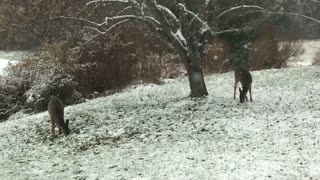 1:43
1:43
boomerangsbyVic
1 year ago $154.59 earnedBaby deer & mom frolic in first snow of the season
8.89K72 -
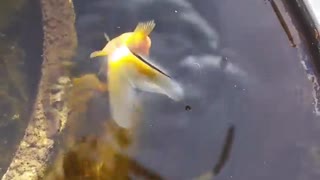 2:02
2:02
amyc21
5 years ago $0.69 earnedFrozen Fish Uses Sun To Thaw Out After Winter Hibernation
2.04K -
 0:15
0:15
chindergeelfiomag
5 years agoBig Elder Deer Eating Fresh Grass In Field
46 -
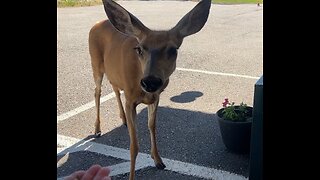 0:33
0:33
cdngreenwaterdiver
10 months ago $1.08 earnedTourist Hand Feeds Wild Deer
681 -
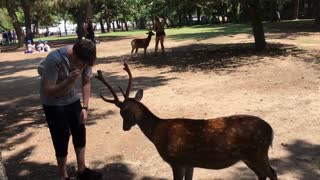 0:15
0:15
qtanimals
5 years ago $78.46 earnedPolite Deer Bows Head To Receive Treats
3.21K2 -
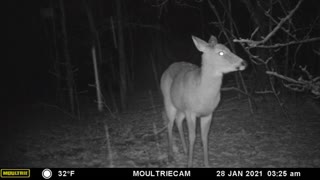 0:20
0:20
Trail Camera Videos
3 years agoWhitetail Deer In Snow
619 -
 0:35
0:35
jamesbigleyranches
10 months ago $0.01 earnedWhitetail Deer
46 -
 1:00
1:00
JustinHoffman
3 months ago $1.11 earnedWhitetail Buck SHEDS Antler on Trail Cam Video (RARE CAPTURE!)
210 -
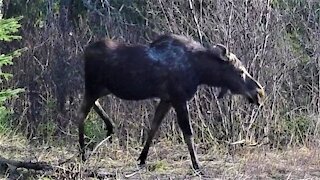 1:46
1:46
KristysWorld
3 years ago $0.92 earnedGigantic moose walks past shocked hikers on woodland trail
7.31K4 -
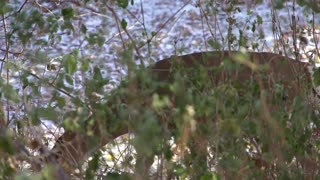 0:28
0:28
chindergeelfiomag
5 years agoLost Deer Found Her Own Ways In To The Wood
10